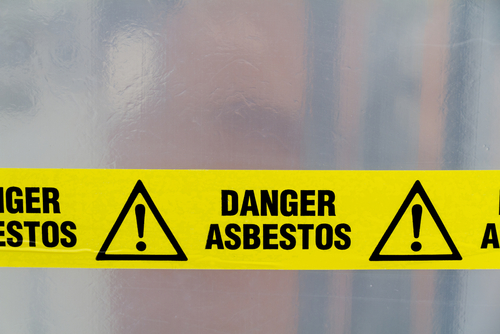 |
Hardly a month goes by without the EPA publishing enforcement actions against companies and individuals that have run afoul of the many regulations related to asbestos. Although most involve violations related to lack of training, lack of public notification, and other abatement-specific failures, many also cite violations of regulations protecting air and water.
The Clean Air Act’s National Emissions Standards for Hazardous Air Pollutants (NESHAP) provides standards for certain industry sectors and for activities that could release harmful asbestos fibers into the air in 40 CFR Part 61, Subpart M. Two of these, the standard for demolition and renovation and the standard for waste disposal for manufacturing, fabricating, demolition, renovation, and spraying operations, are often cited in enforcement actions.
Learn the key laws and regulations addressing asbestos containing material (ACM) in the workplace, both general industry and construction and much more during our in-depth webinar on April 9, 2014.
Register Now
1. Building demolition and renovation requirements include, but are not limited to:
- The owner/operator of a demolition or renovation activity to thoroughly inspect the facility or affected part of the facility for the presence of asbestos (using specific parameters defined in the regulation),
- Provide written notification and updates (such as increases in asbestos and start/end date changes), work descriptions and training certifications,
- Follow detailed procedures for asbestos emissions control, including methods such as ventilation and collection systems, leak-tight wrapping, wetting, and specified procedures for handling asbestos during the removalprocesses, and
- Refresher training for mandatory on-site asbestos-certified personnel that meets specific minimum requirements.
2. Waste Disposal requirements include, but are not limited to:
- A prohibition on visible discharges to the outside air during collection processing/incineration, packaging, or transportation of asbestos-containing waste material;
- Use of specified practices, methods, and controls to safely manage asbestos-containing wastes;
- Labeling asbestos waste containers or wrapped materials according to Occupational Safety and Health Administration (OSHA) requirements;
- Waste disposal at approved sites as soon as is practical;
- Vehicle marking for asbestos-containing waste transport; and
- Shipping records for off-site shipments completed and maintained as defined in the Standard, and provided to disposal site owners/operators at the time of shipment.
Join us on April 9 for an in-depth webinar where our expert, a seasoned EHS professional who has helped other companies proactively address asbestos concerns, will provide participants with a proven, practical strategy to develop and implement a compliant and liability avoiding asbestos operations and maintenance program.
In addition to CAA regulations, the SDWA also required the EPA to determine nonenforceable health goals for drinking water contaminants at which no adverse health effects can be expected to occur. These are called maximum contaminant level goals (MCLGs) and for asbestos the MCLG is 7 million fibers per liter (MFL). An enforceable regulation known as a maximum contaminant level (MCL) has also been set for asbestos at the same level of 7 MFL, which the EPA has determined to be the safe limit for drinking water. States, however, may set lower limits on asbestos in drinking water as they see fit. Most asbestos found in drinking water is the result of decaying asbestos cement water mains and erosion from natural deposits.
As stated yesterday, OSHA also has asbestos standards, specifically the Asbestos General Standard (29 CFR 1910.1001) that provides requirements for permissible exposure limits (PELs), engineering controls, worker training, labeling, respiratory protection and disposal, and the Asbestos Construction Standard (29 CFR 1926.1101), which includes work practices during demolition and renovation, worker training, disposal of asbestos wastes, and PELs.
For mine workers, the Mine Safety and Health Administration (MSHA) covers asbestos in two standards, one for surface mines and one for underground mines (30 CFR Part 56 Subpart D and 30 CFR Part 57 Subpart D, respectively.)
